Have you ever eaten something structured like fruit but tastes like vegetables? And if you ask around, most people would presume that these plants are vegetables, but they are actually categorized as fruits. What we just described is actually a squash. If you’re still confused, squash is technically a fruit.
From a botanical standpoint, the quality that makes something a fruit is the presence of seeds and fruits that grow from the female flowers that have received pollen from the male parts. So, to end the debate finally, squash is not a vegetable but a fruit.
There are many types of squash that you can grow in your garden. In this article, we have compiled some of the best types of squash for your selection. Without further ado, let’s jump right into it!
Table of Contents
1. ‘Honey Bear’ Squash (Cucurbita pepo ‘Honey Bear’)

‘Honey Bear’ squash is another variety of acorn squash that grows in the hardiness zones 11 to 12. This squash can be recognized by its round, glossy, dark green skin and yellowish-orange sweet flesh. The fruits also contain numerous small white seeds.
The ‘Honey Bear’ squash plant requires full sun and wet soil with proper drainage. It usually blooms in the summer and is highly resistant to many diseases that most plants can’t tolerate, such as powdery mildew. The plant produces between 3 to 4 fruits that weigh around one pound.
On average, each honey bear plant can grow between 12 and 18 inches tall and spread between 3 and 4 feet wide.
2. Yellow Squash (Cucurbita pepo var. recticollis)

This summer squash can be distinguished by its shiny yellow skin and long, elongated shape. It is also known as the straightneck squash and summer squash. Yellow squash typically grows between 2 and 3 feet tall and spreads between 36 and 48 inches wide.
The fruit is sweet and possesses a neck-like structure at the upper end, from which the name was derived. Yellow squash generally measure between 4 and 10 inches. They have a sweet flavor that can be mixed with different foods.
This plant requires moist, well-drained soil and enough exposure to full sun. It can be planted either in planting pots or raised garden beds.
3. Acorn Squash (Cucurbita pepo var. turbinata)
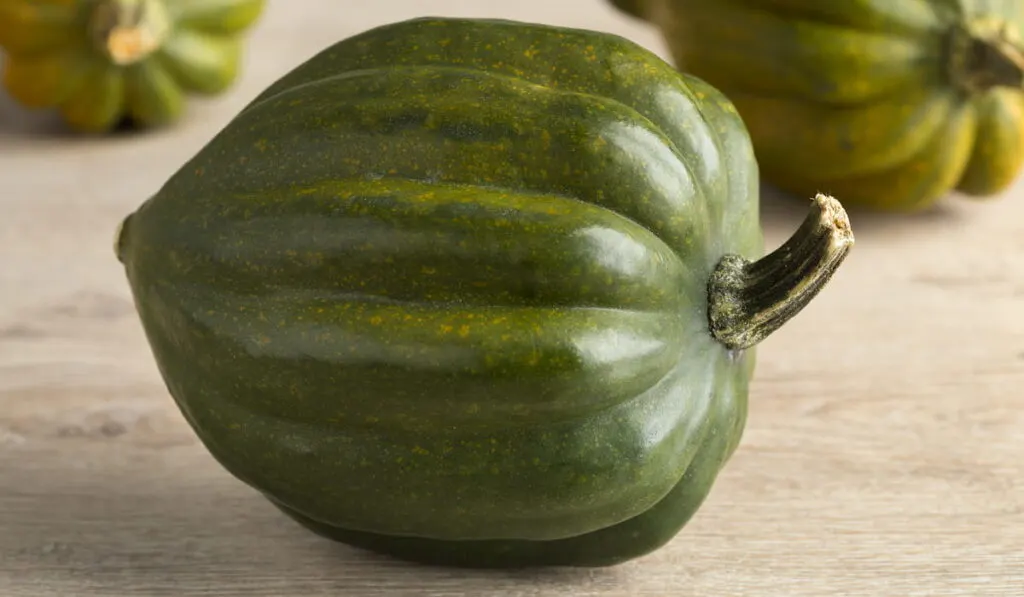
Acorn squash is native to North and Central America. It is also known as the pepper squash and Des Moines squash. This fruit weighs around one pound and can be recognized by its dark green skin, yellowish-orange flesh, and numerous white seeds in the center. As it matures, the skin will turn golden-yellow.
The flesh has a mild but sweet flavor that can be cooked and added to different dishes. Acorn squash generally measures between 5 to 8 inches long and a width between 4 and 5 inches.
The plant produces fruits from fall until winter. However, this squash is easily spoiled and can’t be kept for a long time after being picked.
4. Kabocha Squash (Cucurbita maxima)
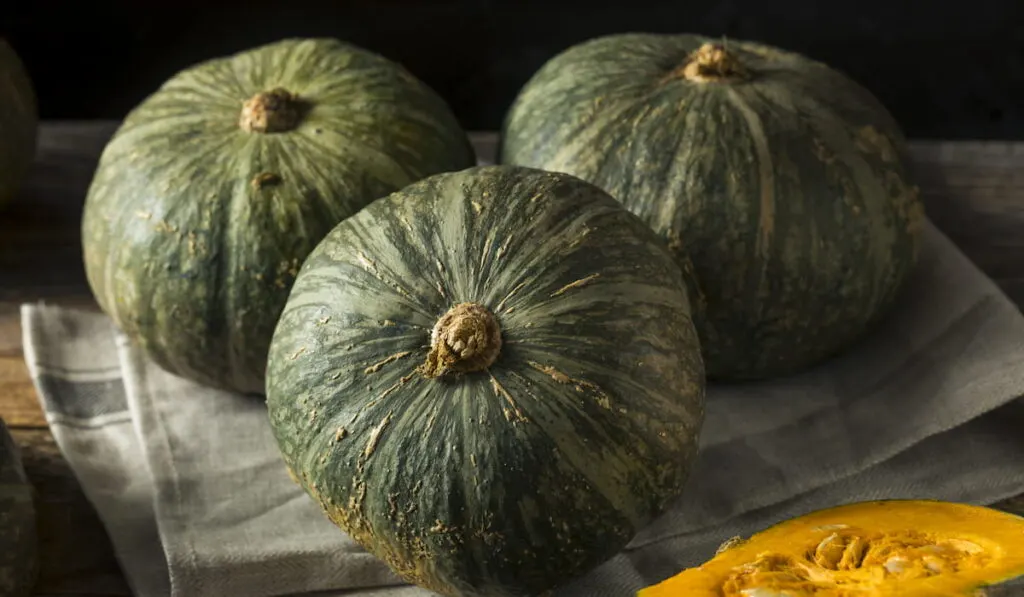
This pumpkin-like squash is also called the Japanese squash, Hoka squash, Delica, Ebisu, and Japanese pumpkin. It has thick, dark green skin covered with tiny white speckles. But when you slice it open, the yellowish-golden flesh has a dry and delicate texture.
Due to its sweet flavor, Kabocha squash has been used in many Japanese cuisines and other Asian dishes, including in Thailand and Korea. This small to medium-sized squash weighs between 3 and 4 pounds with an average diameter of 8 to 12 inches.
Unlike acorn squash, you can keep Kabocha squash in a dry and clean container for up to 5 months. This squash can also be found abundantly during fall, and winter, right until the early spring.
5. Chilacayote Squash (Cucurbita ficifolia)
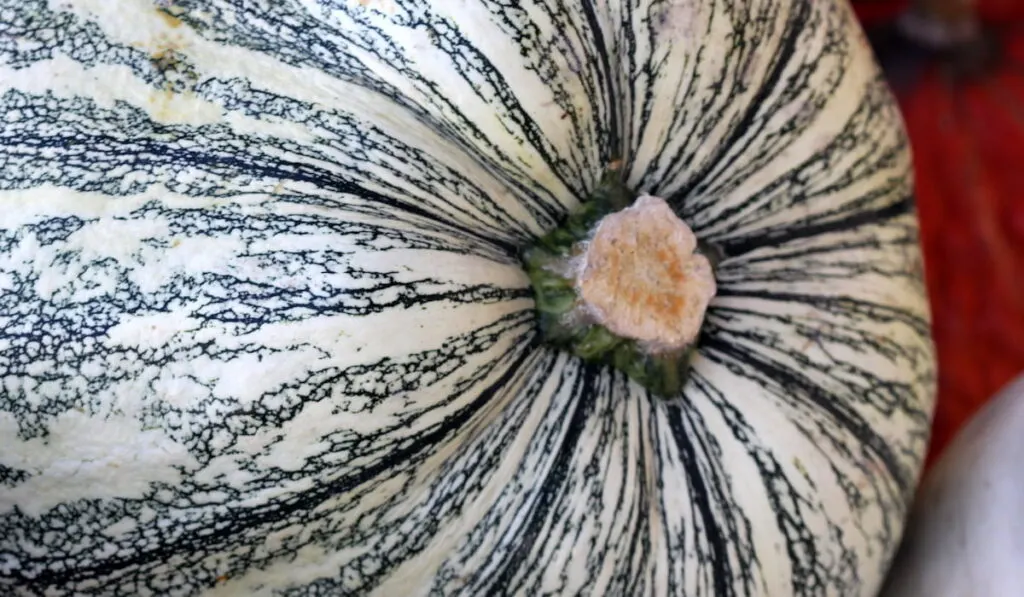
Chilacayote squash is native to South America, particularly in central Mexico. But it can also be found in the United States, Australia, Europe, and Asia. This squash is also known as the shark-fine melon, seven-year melon, fig-leaf melon, and Malabar gourd.
Chilacayote squash can be distinguished by its smooth and glossy light to dark green skin, with white streaks or speckles running perpendicularly on the exterior, and its oblong shape resembles melons.
On the inside, you will find moist white flesh that bears flat, small, dark-colored seeds. Each fruit also weighs between 4 to 13 pounds and can produce up to 500 seeds.
Chilacayote squash is produced on long climbing vines that can extend up to 50 feet long and produce up to 50 fruits late in the season.
6. Banana Squash (Cucurbita maxima ‘Banana’)
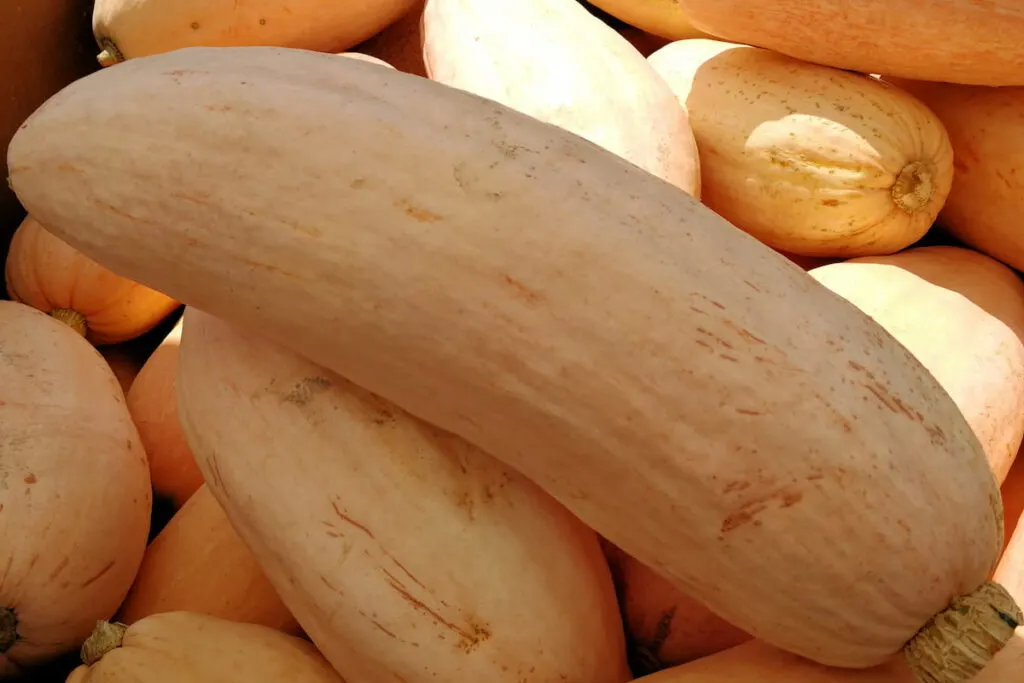
This medium to large-sized squash originated from South America, specifically in Peru. On average, banana squash measures 2 to 3 feet long and weighs 10 pounds. In some cases, it can even grow up to 40 pounds.
This squash also grows on vines that can extend between 12 and 15 feet long. Banana squash is easily recognized by its elongated and curved shape that resembles bananas, and smooth skin that comes in different colors such as yellow, grayish-blue, and pinkish orange. The flesh is orange with numerous flat white seeds in the center cavity.
This squash produces a sweet earthy flavor and can be added to different foods. It can be stored in a dry, dark container for more than 6 months.
7. ‘Carnival’ Squash (Cucurbita pepo ‘Carnival’)
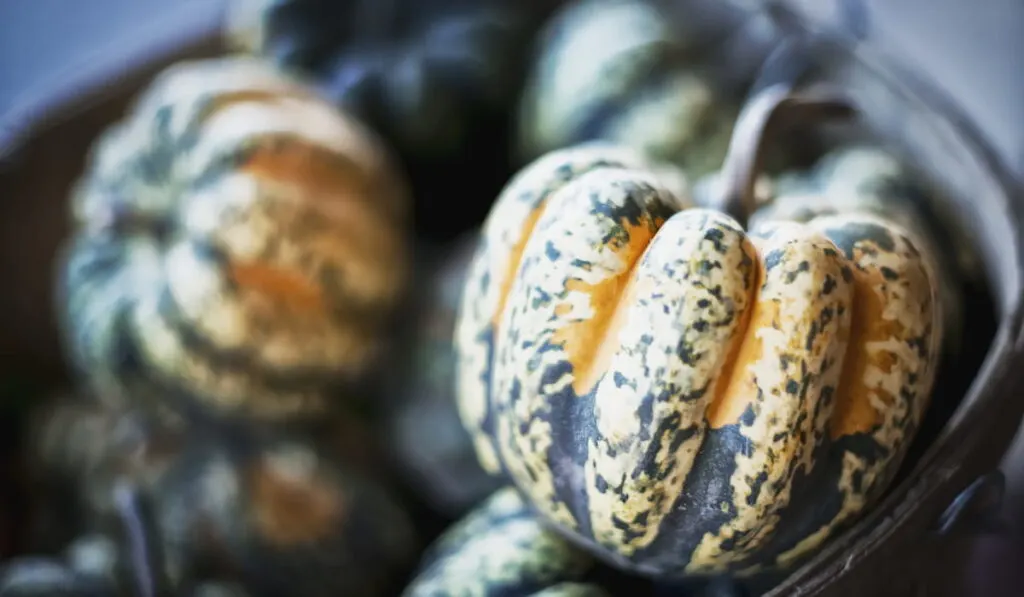
‘Carnival’ squash is indigenous to Mexico. But it can also be found in other places, including the United States, North and South America, Europe, Australia, and Asia.
This small to medium-sized squash can be recognized by its thick, dark green skin that is mottled with yellowish orange speckles and markings.
Carnival squash has a light orange flesh that is sweet, nutty, and buttery, similar to the taste of butternut squash and sweet potato.
This fruit measures between 5 and 7 inches in diameter and can be cooked, baked, sauteed, roasted, or mixed into different dishes. If you keep it in dry and clean storage or away from the sun, this squash can typically last between 3 and 6 months.
8. Cucuzza Squash (Lagenaria siceraria)

Cucuzza squash is native to Italy and closely related to the African bottle guards. It can also be found in the United States, Europe, and Asia.
This squash also goes by its other names, such as Italian edible gourd, cucuzzi, Tasmanian bean, zucca, cuzza, Italian squash, cucuzzi, and the serpent of Sicily.
Cucuzza squash is easily distinguished by its light green smooth skin and elongated shape. The skin usually turns golden brown when it matures. This squash also grows on vines that can extend up to 25 feet long.
On average, cucuzza squash grows between 15 and 35 inches long with a diameter between 2 and 3 inches.
It produces a mild, sweet, and nutty flavor that can be cooked, fried, sauteed, grilled, or mixed with other ingredients for different recipes.
9. ‘Eight Ball’ Squash (Cucurbita pepo ‘Eight Ball‘)

“Eight Ball’ squash is a hybrid variety of zucchini developed in Colorado by a man named Larry Hollar. Back in the old days, this squash was quite popular in Europe, especially in Italy, before being brought and introduced into the American market.
You can recognize this fruit by its oval or round shape, glossy, dark green skin covered with random white speckles, and white flesh with a sweet, buttery, and nutty taste. ‘Eight Ball’ squash usually has a diameter between 3 and 4 inches.
It grows on a shrub that stands around 18 inches tall and spreads around 2 feet wide. This squash is abundant in summer and can be mixed into different recipes or eaten raw.
10. Pumpkin (Cucurbita moschata)
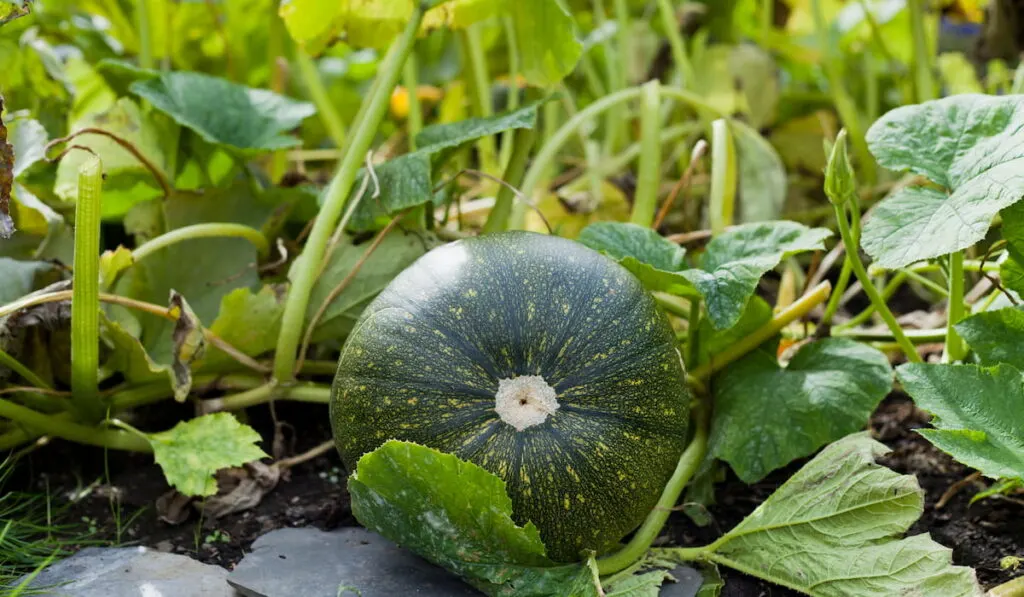
This medium to large-sized winter squash is definitely the most well-known squash out of all varieties that exist in this world. Its bright orange thick skin easily distinguishes it, with deep ridges found on the exterior and light yellow or orange flesh that tastes sweet and nutty.
Numerous large and flat white seeds can also be found in the center cavity inside of this fruit. Although pumpkin is native to South America, it can be commonly found in many places today and used in different types of food, including baked, grilled, roasted, and even fried recipes.
11. ‘Tatume’ Squash (Cucurbita pepo ‘Tatume’)
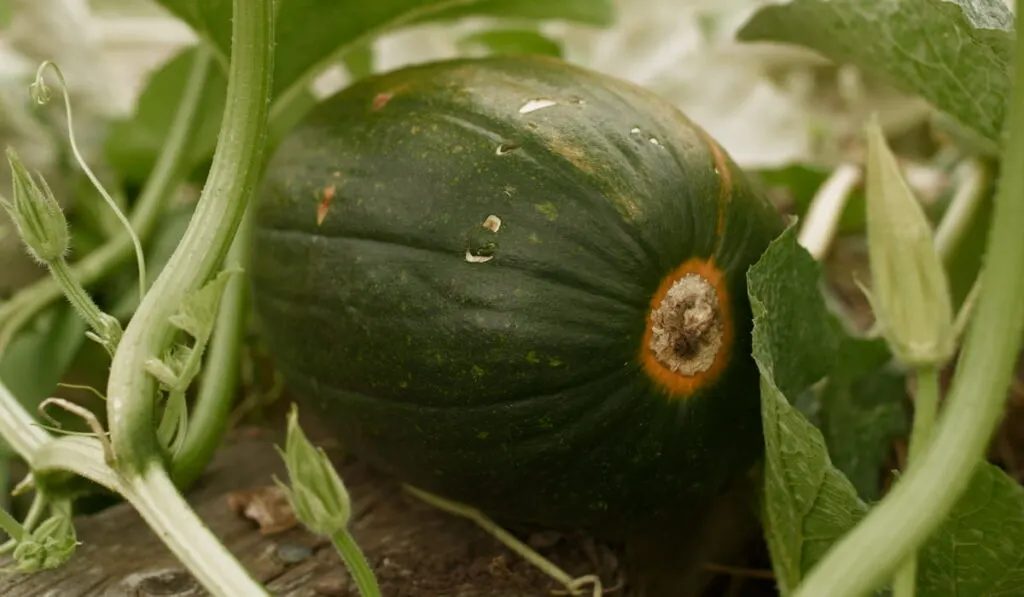
‘Tatume’ squash is indigenous to Mexico. It is also called Mexican zucchini, round zucchini, tatuma, and calabacita. This small to medium-sized squash usually matures to the size of a football with a diameter between 6 and 8 inches.
It has dark green skin covered with small white speckles and whitish-cream flesh. At maturity, the skin will turn yellow or golden. ‘Tatume’ squash grows on vines that can extend up to 12 inches long.
Unlike some squash varieties, it is highly resistant to high temperatures and drought, so it is suitable to be planted in hotter regions.
If you keep this squash in a dry and dark container, it can last up to 6 months. ‘Tatume’ squash also can be cooked, baked, sauteed, grilled, roasted, and eaten raw.
12. Pattypan Squash (Cucurbit pepo var. clypeata)

This exotic-shaped squash is also known as scallop squash, button squash, granny squash, schwoughskie squash, and custard squash.
It is easily recognized by its round, scalloped shape resembling a flying saucer. Pattypan squash generally comes in different colors, including yellow, white, green, and dark green.
This squash has a diameter of 4 to 7 inches and grows on vines that can extend up to 6 feet long. Being a low-maintenance variety, all you need is well-drained soil and enough sun exposure to grow this squash.
Pattypan squash takes between 49 and 54 days to fully mature. Another sign that this squash is ready to be picked is the green skin that changes to yellow or golden.
13. Hubbard Squash (Cucurbita maxima)

Hubbard squash is native to South America and named after the woman who first grew it, Elizabeth Hubbard. It is also known as the buttercup squash and green pumpkin. This large-sized squash weighs between 15 and 20 pounds and can grow up to 1 foot wide.
You can recognize this squash by its thick, coarse skin that comes in different colors ranging from yellowish orange and dark green to bluish-green.
Its sweet yellow flesh can be cooked, roasted, baked, sauteed, and mixed into different recipes. If you keep this squash in a dry and cool space, it usually can last between 5 and 6 months.
14. Zucchini (Cucurbita pepo var. cylindrica)

This eggplant-looking squash is also known as calabacita and courgette. It can be recognized by its long and elongated shape, glossy dark green skin, and whitish cream flesh. Zucchini can grow up to 5 feet long. But on average, most zucchinis grow between 5 to 6 inches long.
It is best to pick this squash before it’s fully mature to prevent its flesh from turning bitter. There is also another smaller and round zucchini variety known as the globe squash or eight-ball zucchini.
Zucchini has a mix of sweet and nutty flavors. It can be cooked, roasted, sauteed, baked, grilled, or mixed with many dishes.
15. Yokohama Squash (Cucurbita moschata)
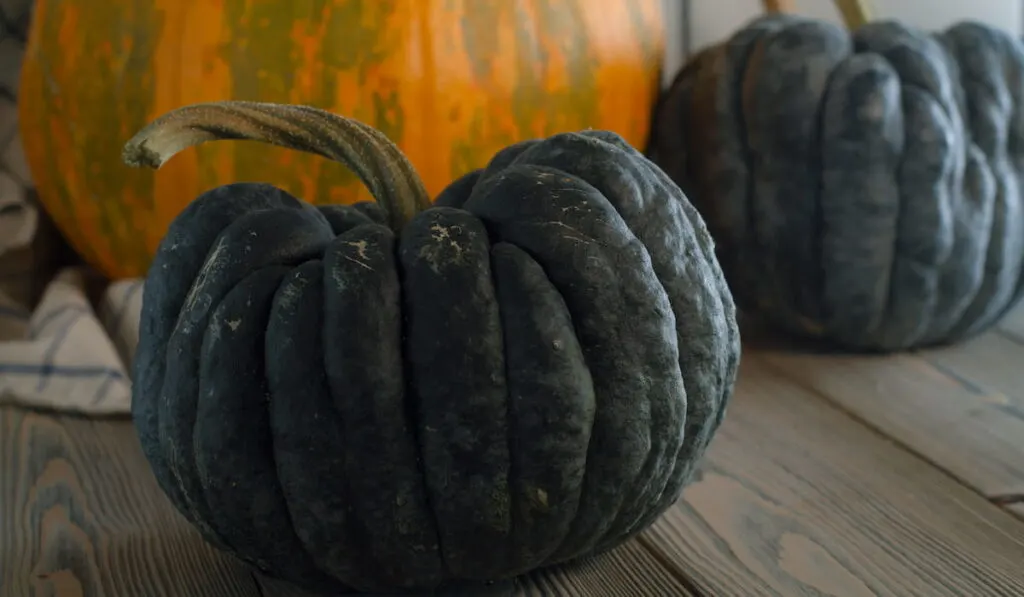
Like its name, this squash originated in Japan, specifically in Yokohama. It was brought into the United States in 1862 by a horticulturist named James Hogg.
This medium-sized squash can be recognized by its grayish or dark green skin that is deeply ridged and bright orange flesh with a small cavity containing numerous small seeds.
Yokohama squash generally weighs between 4 and 8 pounds and measures around 8 inches in diameter. At maturity, the skin will slowly turn orange.
Yokohoma squash grows on vines that can extend up to 16 feet long. Its flesh offers a mix of spicy and floral tastes.
You can keep this squash in a dry and cool place for up to 6 months or more. Aside from its flesh, the seeds of Yokohama squash can be cooked, roasted, toasted, or eaten raw.
Final Thoughts
Although these squashes might look and taste different from one another, they share a few essential qualities of being edible and highly nutritious.
Whether they’re eaten raw or cooked with other dishes, squash contains tons of nutrients, including vitamins A, C, B6, potassium, manganese, folate, magnesium, phosphorus, and fiber. Hence, you have no reason not to include these healthy fruits in your diet.
Resources
- https://www.healthline.com/nutrition/squash-fruit-or-vegetable
- https://www.mygardenlife.com/plant-library/3532/cucurbita/pepo/honey-bear
- https://www.kingsseeds.com/products/vegetable-seeds/squash/squash-honey-bear
- https://en.wikipedia.org/wiki/Straightneck_squash
- https://bonnieplants.com/products/straightneck-squash
- https://www.specialtyproduce.com/produce/Acorn_Squash
- https://en.wikipedia.org/wiki/Acorn_squash
- https://www.thespruceeats.com/what-is-kabocha-squash
- https://www.recipetips.com/glossary-term/t–35847/kabocha-squash.asp
- https://healthiersteps.com/chilacayote/
- https://specialtyproduce.com/produce/Chilacayote_Squash
- https://www.gardeningknowhow.com/edible/vegetables/squash/growing-banana-squash.htm
- https://specialtyproduce.com/produce/Banana_Squash
- https://nesfp.nutrition.tufts.edu/world-peas-food-hub/world-peas-csa/produce-recipes/carnival-squash
- https://specialtyproduce.com/produce/Carnival_Squash_
- https://gardenerspath.com/plants/vegetables/grow-italian-cucuzza-squash/
- https://specialtyproduce.com/produce/Cucuzza_Squash
- https://hosstools.com/product/eight-ball-squash/
- https://specialtyproduce.com/produce/squash/eight_ball_green
- https://specialtyproduce.com/produce/Pumpkin_Squash
- https://www.loamagronomics.com/veggie_guide/squash-tatume/
- https://www.texasrealfood.com/promptuary/pumpkins-squash/tatume-squash/
- https://en.wikipedia.org/wiki/Pattypan_squash
- https://www.gardeningknowhow.com/edible/vegetables/squash/growing-patty-pan-squash.htm
- https://specialtyproduce.com/produce/Hubbard_Squash
- https://www.foodnetwork.com/how-to/packages/food-network-essentials/hubbard-squash
- https://www.recipetips.com/glossary-term/t–35848/zucchini-squash.asp
- https://www.specialtyproduce.com/produce/Zucchini
- https://www.motherearthnews.com/real-food/yokohama-squash
- https://specialtyproduce.com/produce/Yokohama_Squash
